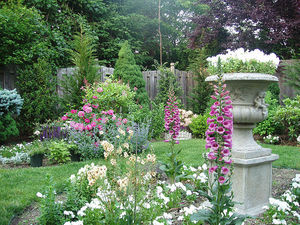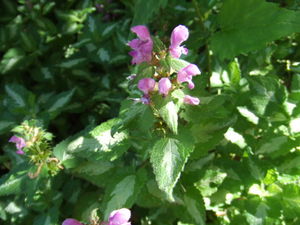If you want a beautiful green landscape, but hate lawn care and mowing, then a dichondra lawn might be just what you’ve been looking for. While dichondra (dichondra repens) isn’t a grass, it is an amazing ground cover that has been described as looking like little lily pads. It is an herbaceous plant, perennial with small flowers that aren’t generally seen. It belongs to the family Convolvulaceae and is considered a creeping plant. There are around 10 species of dichondra.
It is adequately suited for a warm, temperate climate, tolerates shade or sun, preferring a sunny location, and will spread out over the landscape relatively quickly. It does require watering, and doesn’t tolerate too much drought or foot traffic, but its beauty easily outweighs all of that, unless you are in an area where water restrictions are regulated. Dichondra can be somewhat difficult to get started from seed, but once an area of dichondra has grown, it is possible to cut off sections and transplant them to other areas. Since it spreads rapidly, it shouldn’t take too long for the newly planted area to begin to thrive and spread. Then more cuttings can be made and transplanted until there is sufficient coverage that will eventually merge together into a bright green carpet.
The leaves of dichondra repens can be rounded or more kidney shaped, thus the nickname ‘kidney weed’. The species is a native plant of Australia and was used as an alternative to grass for lawns in the United States during the 1950s and 60s, although there are still dichondra lawns around. Dichondra is also an excellent plant to use in landscaping around rocks or stepping stones. Because it is a hardy plant that tolerates a range of conditions, it can get out of hand and dominate your lawn. For this reason, it should be restricted and trimmed back if it begins to dominate the landscape. It is considered a weed in a lot of regions.
Dichondra grows into thick mats which can choke out weeds and actually help to maintain a degree of moisture in the soil due to the density of the plants and leaves. One drawback to take into consideration when planting dichondra is that it is listed on the Federal Drug Administration’s (FDAs) list of poisonous plants for mammals. Of course, since people and most pets like cats and dogs are mammals, care should be taken to make sure children and pets do not eat the dichondra.
Sources:
http://www.ipm.ucdavis.edu/PMG/WEEDS/dichondra.html
http://en.wikipedia.org/wiki/Dichondra
http://www.ars-grin.gov/cgi-bin/npgs/html/taxon.pl?316649



